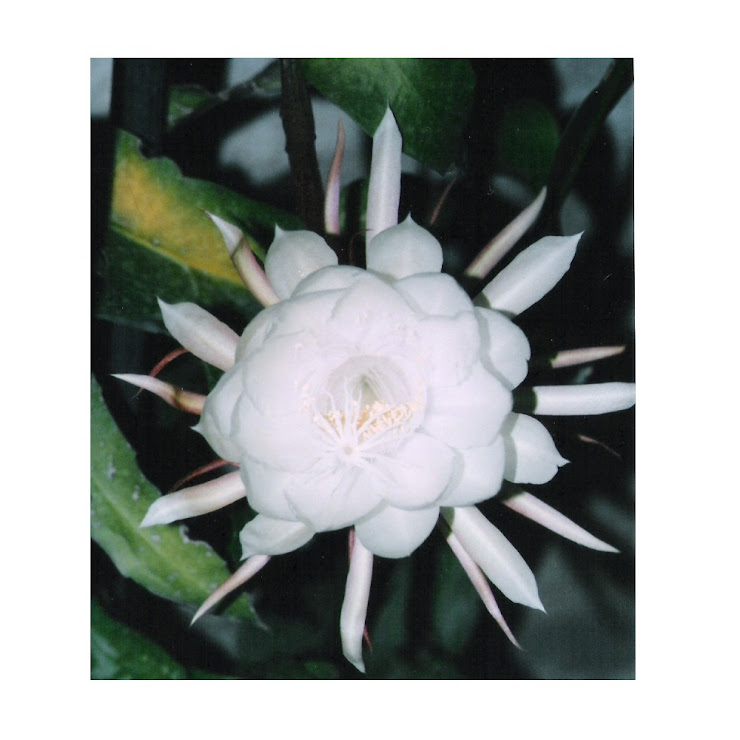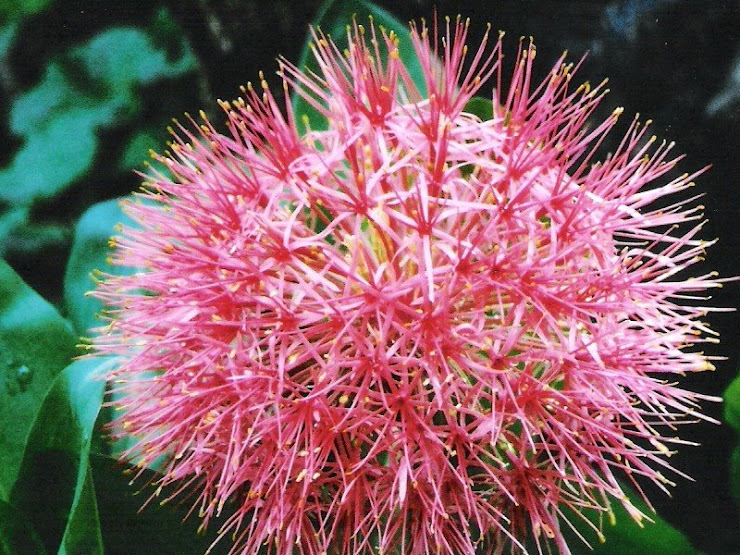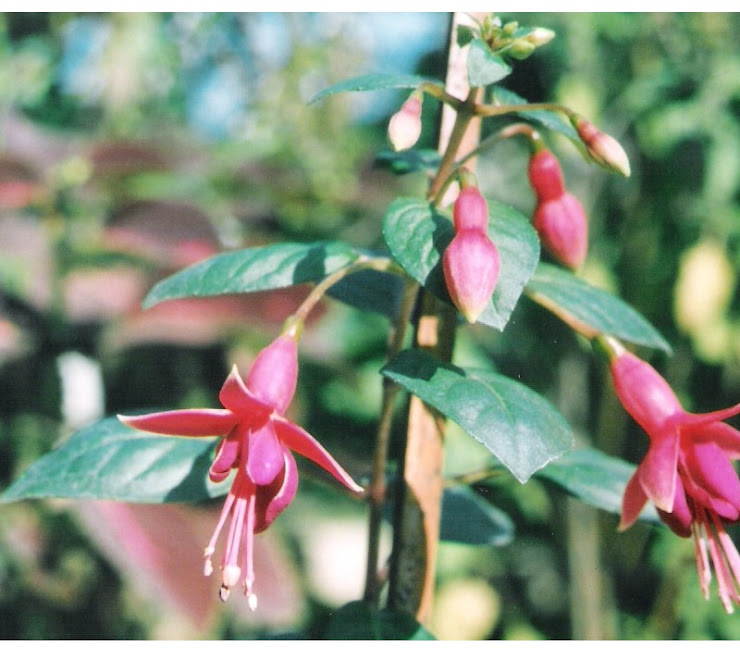COMPOST THE IDEAL PLANT FOOD
Why is compost special?
Building and maintaining a compost pile is the surest, easiest way to become a better gardener. Not only will you be producing the best possible food for your garden, but by watching leaves, eggshells, orange rinds, and grass clippings become transformed into rich compost filled with earthworms and other soil creatures, you'll be learning what healthy soil is all about.
Compost is a rich and crumbly blend of partially decomposed organic material that does wonderful things for your garden.
Compost improves soil structure. Most gardeners do not start with the best soil. Whether yours is hard and compacted, sandy, stony, heavy, or wet, adding compost will improve its texture, water-holding capacity, and fertility. Your soil will gradually become fluffy and brown, the ideal home for healthy plants.
Compost provides a balanced source of plant nutrients. Even if you are lucky enough to have great soil, you can not expect that soil to remain rich and productive without replenishing the nutrients that are consumed each growing season. No commercial fertilizer, even one that is totally organic, provides the full spectrum of nutrients that you get with compost. The nutrients are available gradually, as your plants need them, over a period of months or years. The microorganisms in the compost will also help your plants absorb nutrients from fertilizers more efficiently.
Compost stimulates beneficial organisms. Compost is teeming with all kinds of microorganisms and soil fauna that help convert soil nutrients into a form that can be readily absorbed by your plants. The microorganisms, enzymes, vitamins and natural antibiotics that are present in compost actually help prevent many soil pathogens from harming your plants. Earthworms, millipedes, and other macro-organisms tunnel through your soil, opening up passageways for air and water to reach your plants' roots.
Compost is garden insurance. Even very experienced gardeners often have soil that is less than perfect. Adding compost moderates pH and fertility problems, so you can concentrate on the pleasures of gardening, not the science of your soil’s chemical composition. Unlike organic or inorganic fertilizers, which need to be applied at the right time and in the right amount, compost can be applied at any time and in any amount. You can not really over-apply it. Plants use exactly what they need, when they need it.
Can a gardener ever have enough compost?
It's doubtful. Compost is the perfect thing to spread around when you are creating a new garden, seeding a new lawn area, or planting a new tree. Compost can be sprinkled around plants during the growing season or used as mulch in your perennial gardens.
You can add Compost to your flower boxes and deck planters. You can also use it to enrich the potting soil for your indoor plants.How compost is made - Organic matter is transformed into compost through the work of microorganisms, soil fauna, enzymes and fungi. When making compost, your job is to provide the best possible environment for these beneficial organisms to do their work. If you do so, the decomposition process works very rapidly, sometimes in as little as two weeks! If you don not provide the optimum environment, decomposition will still happen, but it may take from several months to several years. The trick to making an abundance of compost in a short time is to balance the following four things:
Carbon. Carbon-rich materials are the energy food for microorganisms. You can identify high-carbon plant materials because they are dry, tough, or fibrous, and tan or brown in color. Examples are dry leaves, straw, rotted hay, sawdust, shredded paper, and cornstalks.
Nitrogen. High-nitrogen materials provide the protein-rich components that microorganisms require to grow and multiply. Freshly pulled weeds, fresh grass clippings, over-ripe fruits and vegetables, kitchen scraps and other moist green matter are the sorts of nitrogen-rich materials you'll probably have on hand. Other high-protein organic matter includes kelp meal, seaweed, manure and animal by-products like blood or bone meal.
Water. Moisture is very important for the composting process. But too much moisture will drown the microorganisms, and too little will dehydrate them. A general rule of thumb is to keep the material in your compost pile as moist as a well-wrung sponge. If you need to add water (un-chlorinated is best), insert your garden hose into the middle of the pile in several places, or sprinkle the pile with water next time you turn it. Using an enclosed container or covering your pile with a tarp will make it easier to maintain the right moisture level.
Oxygen. To do their work most efficiently, microorganisms require a lot of oxygen. When your pile is first assembled, there will probably be plenty of air between the layers of materials. But as the microorganisms begin to work, they will start consuming oxygen. Unless you turn or in some way aerate your compost pile, they will run out of oxygen and become sluggish.
Do I Need a Recipe?
Microorganisms and other soil fauna work most efficiently when the ratio of carbon-rich to nitrogen-rich materials in your compost pile is approximately 25:1. In practical terms, if you want to have an active compost pile, you should include lots of high-carbon "brown" materials (such as straw, wood chips, or dry leaves) and a lesser amount of high-nitrogen "green" materials (such as grass clippings, freshly pulled weeds, or kitchen scraps).
If you have an excess of carbon-rich materials and not enough nitrogen-rich materials, your pile may take years to decompose (there is not enough protein for those microbes!). If your pile has too much nitrogen and not enough carbon, your pile will also decompose very slowly (not enough for the microbes to eat!), and it will probably be soggy and smelly along the way.
But don't worry about determining the exact carbon content of a material or achieving a precise 25:1 ratio. Composting does not need to be a competitive, goal-oriented task. All organic matter breaks down eventually, no matter what you do. If you simply use about 3 times as much "brown" materials as "green" materials, you'll be off to a great start. Take a look at the sample recipes and check the chart of common compost materials. With experience, you'll get a sense for what works best. Compost gets hotHeat is a by-product of intense microbial activity. It indicates that the microorganisms are munching on organic matter and converting it into finished compost. The temperature of your compost pile does not in itself affect the speed or efficiency of the decomposition process. But temperature does determine what types of microbes are active.
There are primarily three types of microbes that work to digest the materials in a compost pile. They each work best in a particular temperature range:
The Psychrophiles work in cool temperatures, even as low as 10 degrees C. As they begin to digest some of the carbon-rich materials, they give off heat, which causes the temperature in the pile to rise. When the pile warms to 30 to 40 degrees C, Mesophilic bacteria take over. They are responsible for the majority of the decomposition work. If the Mesophiles have enough carbon, nitrogen, air, and water, they work so hard that they raise the temperature in the pile to about 50 degrees C. At this point, Thermophilic bacteria become active. It is these bacteria that can raise the temperature high enough to sterilize the compost and kill disease-causing organisms and weed seeds. Three to five days of 75 degrees C. is enough for the Thermophiles to do their best work.
Getting your compost pile "hot" (70 to 80 degrees C.) is not critical, but it does mean that your compost will be finished and usable within a month or so. These high temperatures also kill most weed seeds, as well as harmful pathogens that can cause disease problems. Most people don't bother charting the temperature curve in their compost pile. They just try to get a good ratio of carbon to nitrogen, keep the pile moist and well aerated, and wait until everything looks pretty well broken down. If you want to get a little more scientific about it, buy a compost thermometer.
Commercial activators can help raise the temperature in your compost pile by providing a concentrated dose of microorganisms and protein. Other effective activators that can help to get your pile cooking include humus-rich soil, rotted manure, finished compost, dried blood, and alfalfa meal.
To Turn or Not to Turn: Unless speed is a priority, frequent turning is not necessary. Many people never turn their compost piles. The purpose of turning is to increase oxygen flow for the microorganisms, and to blend un-decomposed materials into the center of the pile. If you are managing a hot pile, you'll probably want to turn your compost every 3 to 5 days, or when the interior temperature dips below about 50 degrees C.
After turning, the pile should heat up again, as long as there is still un-decomposed material to be broken down. When the temperature stays pretty constant no matter how much you turn the pile, your compost is probably ready. Though turning can speed the composting process, it also releases heat into the air, so you should turn your pile less frequently in cold weather.
There are several ways to help keep your pile well aerated, without the hassle of turning:
Build your pile on a raised wood platform or on a pile of branches. Make sure there are air vents in the sides of your compost bin. Put one or two perforated 4-inch plastic pipes in the center of your pile.
Worm Composting: Employing worms to make compost is called vermiculture. Manure worms, red worms, and branding worms (the small ones usually sold by commercial breeders) are dynamos when it comes to decomposing organic matter, especially kitchen scraps. The problem is that these worms cannot tolerate high temperatures. Add a handful of them to an active compost pile and they will be dead in an hour. Field worms and night crawlers (common garden worms with one big band) are killed at even lower temperatures.
To maintain a separate worm bin for composting food scraps, you need a watertight container that can be kept somewhere that the temperature will remain between 50 and 80 degrees F. all year-round. Ready-made worm bins are available, but you can also make your own.
TEN COMPOST MAKING TIPS & TROUBLE SHOOTING
1. Keep some straw, kitchen litter, dry leaves, or peat moss near your compost pile. Sprinkle a little on the top of the pile each time you add fresh weeds or kitchen scraps. These high-carbon materials will help keep the C/N ratio in balance.
2. Try burying your kitchen scraps right in the garden. Just dig a 12- to 15-inch-deep hole in the pathway, pour in the scraps, and cover with soil.
3. Search around your town for a plentiful source of free organic material. You might try a horse farm, food processing plant, local wood shop, or grounds maintenance service.
4. Cover your pile for best results. It will deter pests, hold in heat, and keep the moisture level more constant. A pile that's dry or too water-logged takes a very long time to break down. You can use a tarp, piece of plastic, a piece of old carpet, or piece of metal roofing.
5. In northern states, cover your pile in late fall to avoid leaching nutrients and to prevent the pile from becoming water-logged. A drier pile will thaw more quickly the following spring.
6. Don't add compost to a seed-starting mix unless you are sure that the pile got hot enough to be sterilized (140°-160°F). Seedlings are very susceptible to bacteria that are harmless to more mature plants.
7. Shredded materials compost very rapidly. The more surface area for microbes to attack, the sooner you'll have usable compost. You can chop your materials with a machete or shovel, run them through a shredding machine, or run over them with your lawn mower.
8. Compost piles that are smaller than 3 feet by 3 feet will have trouble heating up - especially in cool climates. Piles larger than 5 feet by 5 feet may not allow enough air to reach the center.
9. If fruit flies are a problem indoors, your compost container is probably not airtight. Make sure it has a tight-fitting lid that gets sealed shut after being opened.
10. If skunks and burrowing rodents are hanging around your compost pile, try using a powdered or spray repellent. You can also bury hardware cloth up and around the bottom of your compost bin. Avoid putting meat or fatty foods in your pile: they attract all sorts of animals. Compost pile won't heat up. The materials may be too dry. This can happen quickly during the summer months. Try to keep your compost materials moist to the touch. Cover the pile. The pile may be low in nitrogen. Fast-working microorganisms can quickly consume all the nitrogen and leave un-decomposed carbon materials behind. Replenish the nitrogen content of your pile with fresh green grass clippings, garden weeds, kitchen scraps, manure, or an activator like Super Hot. Your pile may also be too small. Collect more materials and mix everything into a pile that measures 3 feet on each side, and is at least 3-feet high.
Smelly compost. If your pile smells like ammonia, it may contain too much nitrogen. Add carbon materials such as straw, leaves, or hay to correct the balance.
Soggy compost. Dense or water-logged compost piles don't contain enough oxygen for the microorganisms to survive. Often these piles give off an unpleasant odor. The solution is to aerate the pile and add more dry materials. Finished product is too rough. Some materials like eggshells and corncobs take a very long time to break down. If you want more finely textured compost, shred or chop up the materials before putting them into the bin. You can also sift out these crumbs and throw them back into the next pile.
Treasury to cover Bayeux Tapestry for estimated £800m
-
The huge embroidery will be covered under the government's indemnity scheme
when it travels to the UK.
1 hour ago







No comments:
Post a Comment